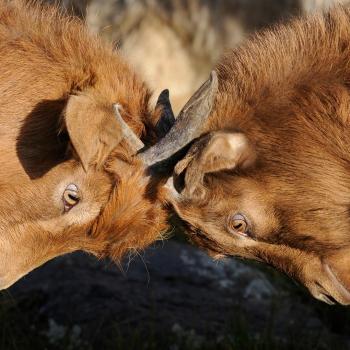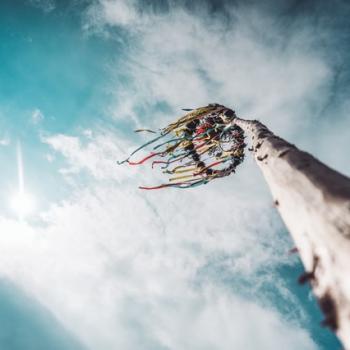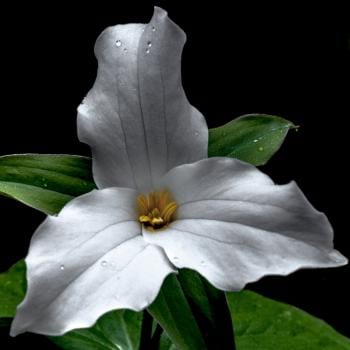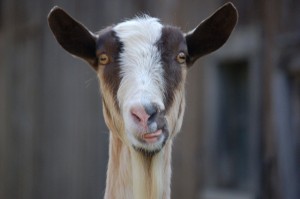
One of the things that always struck me as particularly ridiculous about the Bible is its strange antipathy towards goats. Sheep go to heaven, goats go to hell Matthew 25:31-46). (There’s even a pretty catchy song about it.)
What did goats ever do to me? I thought as a kid whenever this issue came up in Sunday school. I even had a friend who had a pet goat. (I grew up in Lancaster, where they have an annual pumpkin-rolling contest… just to give you some context). It had always seemed like a nice little goat, with a white whiskery face. The worst it ever did was smell a bit musty, and sometimes go stiff and topple into the furniture if you startled it.
Of course, this is what they call a parable. What goats really did wrong to earn such condemnation in the Good Book was to be too clever by half, the kind of creature that likes to clamber up onto places it’s not supposed to go and jump fences that we humans have so carefully built to separate this from that, yours from mine, human food from goat food. Whereas all sheep do — and they do it commendably — is lounge about in the fields all day munching grass in approximately the same place you left them, maybe drifting a bit if there’s a strong breeze, like white fluffy clouds except slightly less intelligent. In short, the difference between sheep and goats is how widely they tend to wander.
It’s been fifteen years since I left Christianity behind and traded it in for the shiny new model of modern Paganism, and so I thought I’d seen the last of this unfounded speciesism. No more bad-mouthing goats, I thought. Heck, half the Pagans I knew worshipped a goat-horned, goat-footed god.
But Pagans have their own blind spots and irrational hatreds when it comes to the animal kingdom. (Need I remind you about the mole problem?)
It’s not uncommon, for instance, for Pagans to roll their eyes at folks who too eagerly proclaim particular affiliation with wolves or ravens or any of the other Big Impressive North American Birds and Mammals (or BINABM, as Pagan author Lupa calls them). We modern Pagans like our totems to be obscure, free-range organic, and preferably differentiated by genus and species. Scientific nomenclature has come to be more highly prized than esoteric terminology in some circles.
Another popular creature to disparage these days is the lowly wasp. Ask anyone on Tumblr and they’ll tell you, wasps are evil jerks.
Bees on the other hand are awesome — we love these bumbley little pollinators, humming from flower to flower like contented workaholic monks, giving us honey, leaving us alone, mysteriously dying off in huge numbers due to lack of appreciation just like Einstein warned us they would. Bees live in homes the shape of hexagons, in tune with the sacred geometry of the earth. They follow a queen, like any sensible society that knows the value of a good matriarchy. Bees dance to tell each other where to find pollen, you guys! They represent all that is sunny and warm and sweet about these days of lazy late summer evenings and bushy-tailed early autumn afternoons, with the bountiful harvests they bring.
But wasps — they’re just assholes. Sharp-edged and angular, full of the potential to prick. Without even the decency to die of disarmament afterwards.
I won’t say that wasps don’t make me slightly uneasy. But I strive to put my personal biases aside and be a good friend to the wasp people when I can. Why go to such effort? Let me ask you a different question:
Do you like monkeys? (The answer to this question is yes, so I’m going to move on.) Do you like toucans, hornbills, flowerpeckers, and wood-quail? How about fruit doves and fairy bluebirds? Does your heart take flight with the crested fireback and the red-rumped tinkerbird ? What about the Aldabran giant tortoise, and the Jesus Christ lizard? (That’s a real lizard, Basiliscus basiliscus, so nicknamed for its ability to walk on water — look it up.) Do you fill with joy at the thought of the sugar glider, the slender tree shrew, the Bismarck flying fox, the spotted cuscus and its silky cousin? Or perhaps you love the spiny bandicoot, the grizzled tree kangaroo, the agile wallaby, and the grey four-eyed possum? (All real.)
All these creatures — just a few on a list of nearly thirteen hundred species of birds, mammals, reptiles and even fish! — have something in common: they all depend on a single plant genus: Fiscus, the fig. You see, the fig is a very special kind of plant, what scientist refer to as a keystone provider (a type of keystone species).
What’s a keystone provider? In many ecosystems, seasonal cycles mean that flowering fruit- and nut-bearing plants only produce during certain times of the year. In temperate forests, for instance, the cold winter months mark a time of scarcity, while grassland and desert regions often see limited resources during the dry summer season. Even in the rich, teeming world of the tropical rainforest, the native flora have their cycles of growth and fruition. And so, in ecosystems all over the planet, keystone providers are those species that support robust biodiversity by providing food and shelter for a wide variety of other plants and animals throughout the entire year. These plants act as stepping stones, lifelines during times of scarcity.
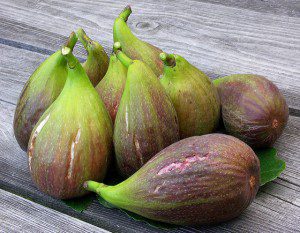
The fig is a keystone provider par excellence. Unlike most other fruiting plants, fig trees — even those within the same species — follow individual schedules of blossoming and ripening, and so they rarely produce fruit all at the same time. Fig trees can also fruit more than once in a given year, ensuring a continuous supply of food for the many animals that rely on them as a vital resource. For fruit bats and capuchin monkeys, among others, figs provide a lifeline during times of year when no other food is available and can mean the difference between sustenance and starvation:
An animal can usually fall back on a fig when a mango or a lychee is not in season. […] According to a 2003 study of Uganda’s Budongo Forest, for instance, figs are the sole source of fruit for chimpanzees at certain times of year. Our pre-human ancestors probably filled up on figs, too. The plants are what is known as a keystone species: yank them from the jungle and the whole ecosystem would collapse.
The fruit of the fig tree is so nutritious and delicious that modern-day humans, too, indulge in this delicacy. Some human cultures have even dubbed this plant the Queen of Trees, and preserve sacred fig groves as holy sites. In India the presence of fig trees has helped slow deforestation, as farmers are reluctant to chop them down due to lingering taboos that mark figs as the dwelling places of gods and spirits, making them “places of prayer and symbols of society.”
So what? you ask? What’s she going on about figs for…?
Do you know what the fig tree — Queen of Biodiversity, nurturing mother of our primate ancestors in the rough-and-tumble jungle of eras past — do you know what the fig depends on for its survival? Its one and only pollinator?
That’s right: a wasp. A lowly little wasp.
The fig wasp, to be specific. A tiny species that has co-evolved with the fig tree over the course of countless millennia. (My husband the linguist tells me that both the words fig and wasp have existed for so long, nobody knows where they came from or what they originally meant — though the word wasp might be related to the Proto-Indo-European word meaning “to weave.”)
The fig depends on the fig wasp for pollination thanks to the plant’s unique anatomy: the fruit of a fig tree is not actually a fruit at all. When you bite into a sweet, tasty fig, what you are actually eating is an enclosure of tiny, inward-blooming flowers. With its flowers opening inward, inaccessible to other pollinators, the fig depends on the little fig wasp, which burrows inside and lays its eggs among the tiny blossoms:
Mother wasps lay their eggs in an unripe fig. After their offspring hatch and mature, the males mate and then chew a tunnel to the surface, dying when their task is complete. The females follow and take flight, riding the winds until they smell another fig tree. When the insects discover the right specimen, they go inside and deposit the pollen from their birthplace. Then the females lay new eggs, and the cycle begins again.
In fact, this intimate partnership between the fig and the fig wasp is the very reason why fig trees fruit throughout the year. Since a fig wasp emerges from a ripe fig in search of an unripe one in which to lay her eggs, there must always be figs at different stages of blossoming and ripening, stepping stones for the wasp and so for every other species that depends on the fig for food. In other words, this majestic Queen of Trees relies on the service provided by her tiny wasp devotee to help her fulfill her role as keystone provider for hundreds of other species.

In return, the mother wasp must sacrifice her wings — which are destroyed when she enters the unripe fruit — and soon after laying her eggs she dies, forever entombed in a womb of flowers.
(Do you find yourself suddenly in sympathy with this noble little insect? And could this be why Jesus, usually so chill about these things, cursed the fig tree for not fruiting as it should, in the face of such sacrifice? I wonder…)
As John Muir said, “When we try to pick out anything by itself, we find it hitched to everything else in the universe.” This is the Seventh Principle of Unitarian Universalism: the interconnected web of being.
But I can’t help but also be reminded of something Chris Rock once pointed out: “See, it don’t make no sense to hate nobody. It doesn’t. Because whoever you hate will end up in your family.”
The Seventh Principle conspires with the First: the inherent worth and dignity of every person. It doesn’t matter if that person is a wide-wandering goat or a fig-digging wasp, or the friendly neighborhood plastic shaman who howls with the wolves every full moon, or the fluffy-bunny teen witch who hangs posters of brooding ravens all over the pink-floral wallpaper of her childhood bedroom. (Yes, even that person who changed lanes without signaling, with the acronymically-challenged vanity plate and the bumper sticker supporting the political candidate you hate. Even them.)
We’re all one family. We’re all in this together — come famine or feast.








